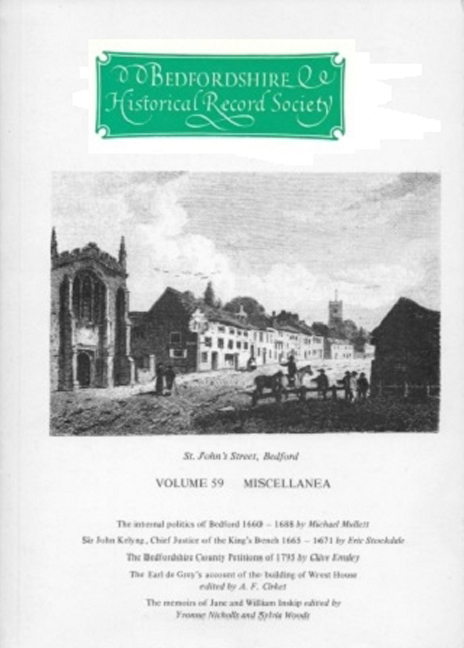Book contents
The Earl de Grey’s account of the building of Wrest House
Published online by Cambridge University Press: 15 February 2024
Summary
Introduction
This history of the building and fitting out of Wrest Park House was written by the owner Earl de Grey. Born in 1781, he was the eldest son of Thomas Robinson, second Baron Grantham of Grantham by Mary, younger daughter of Philip Yorke Earl of Hardwicke and Jemima Marchioness Grey, and he succeeded his father as third baron in 1786. He became the sixth baronet Robinson of Newby in 1792 on the death of his second cousin, Sir Norton Robinson, from whom he inherited Newby Park and property near York. In the same year also a distant relative William Weddell of nearby Newby Hall died, and this property too passed to him.
He was colonel-commandant of the Yorkshire Hussar Regiment of Cavalry for over forty years and was appointed yeomanry aide-de-camp to William IV and held a similar position under Queen Victoria.
Nominated as Lord Lieutenant of Bedfordshire in 1818, an office he held until his death, he succeeded to the estates of his aunt, Amabel Hume Campbell, Countess de Grey of Wrest Park on 4th May 1833, and became second Earl de Grey and Baron Lucas of Crudwell, Wiltshire.
In Sir Robert Peel's first administration he held office as first Lord of the Admiralty from 22nd December 1834 to 25th April 1835 and was made Privy Councillor on his appointment. He served as Lord Lieutenant of Ireland from 3rd September 1841 to 26th July 1844. A contemporary article in the ■Illustrated London News reported “he fills [the post] to the satisfaction of moderate men at least, of both parties, although the number of these in Ireland is not legion”. The Dictionary of National Biography says “He discharged the functions of his viceregal position impartially and with credit, and his retirement was much regretted by the people of Dublin. His hospitality was very generously exercised and the Countess gave much encouragement to native manufactures”. On the founding of the Insti tute of British Architects in 1834 he was invited to become its president because of his great interest in the arts, and to give the Institute the benefit of his social and political influence. He presided at their first meeting on June 3rd 1835 and frequently at subsequent meetings, remaining their distinguished president until his death. The Institute was given its Royal Charter in 1837.
- Type
- Chapter
- Information
- Miscellanea - Volume 59 , pp. 65 - 88Publisher: Boydell & BrewerFirst published in: 2024



